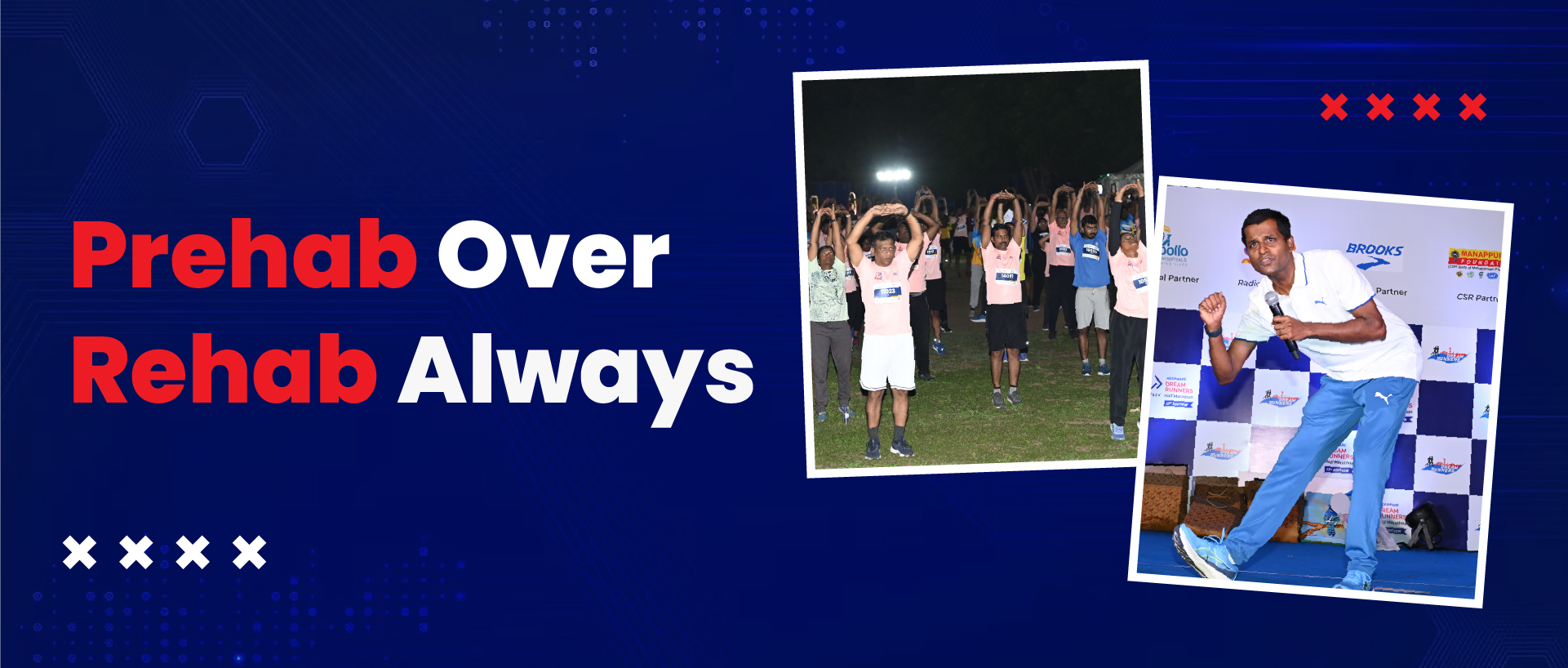
Quick and easy habits for injury - free running
Running is a huge mood elevator and all is good till one day, after a run, some pain surfaces. The little doubt creeps up, is this an injury? Do I need to stop running? Every runner is faced with this quandary once in a while.
Before we go ahead, we must clarify that all pain associated with running is not necessarily bad or injury. The pain associated with hard intervals or hill repeats, or the soreness of your quadriceps after a long run will usually resolve.
A pain that surfaces without an unusual increase in activity, refuses to settle with a few days of rest and is aggravated by running is suggestive of an injury.
The commonest reasons to get a running related injury or pain are
Too much – Running too much mileage as is common with running challenges where every km is added to a score or when trying to maintain a streak. Some will try to pack all their weekly mileage into 1 single run and call it their long run instead of their only run.
Too soon – Increasing your weekly mileage indiscriminately. Very common in those who have started running and now feel like they are ready to target longer distances.
Too fast – Running most of their mileage at an aggressive pace without adequate recovery between these hard runs. Having no easy days or easy paced runs.
Poor shoes – Old, worn out and support less shoes well past their expiry date are a very common recipe for injury. Heavy shoes are another cause.
No shoes – Barefoot running is another possible cause for injury if the transition isn’t gradual. This goes for any change in shoes with a significant difference in heel toe drop.
Muscular Imbalances – Usually happens following poor rehab from an injury where a muscular imbalance leads to more stress on one side. This happens because running is a repetitive stress and even a mild difference will lead to significant disturbance.
Running form – There are multiple schools of thought on what is the ideal form which is beyond the scope of this article. Simply put, run tall and run light. The farther ahead you can see and the less you hear of your footsteps, the less likely you are to have an injury.
Nutrition – Most people don’t realise that running is a catabolic activity. That means the more you run, the more muscle you lose. This means you need to actively add protein to your diet. This will not only help you recover better from hard workouts but it will also prevent injury.
Follow some simple rules,
Maintain a running log, digital or otherwise. This will tell you what you did differently prior to an injury. Never increase your weekly mileage by more than 10%. Make sure 80% of your mileage is at an easy, conversational pace. Don’t pack in more than 30%of your weekly mileage into 1 run.
Keep track of mileage on a shoe. If you run more than 3 times a week, it’s advisable to rotate 2 pairs of shoes. Change them before they give you problems.
Do some strength training twice a week and make sure that you are well balanced in your strength
Concentrate on running tall and light. Eat your protein.
Remember if you run, you will get injuries. Approach them the same way you approach running, with discipline, commitment and always get professional help.
Run happy, run far and run injury free.
Dr. Parthasarathy Srinivasan
Dream Runners

#LetUsRunSoTheyCanWalk #RunClean #RunResponsible #SheShouldRun
